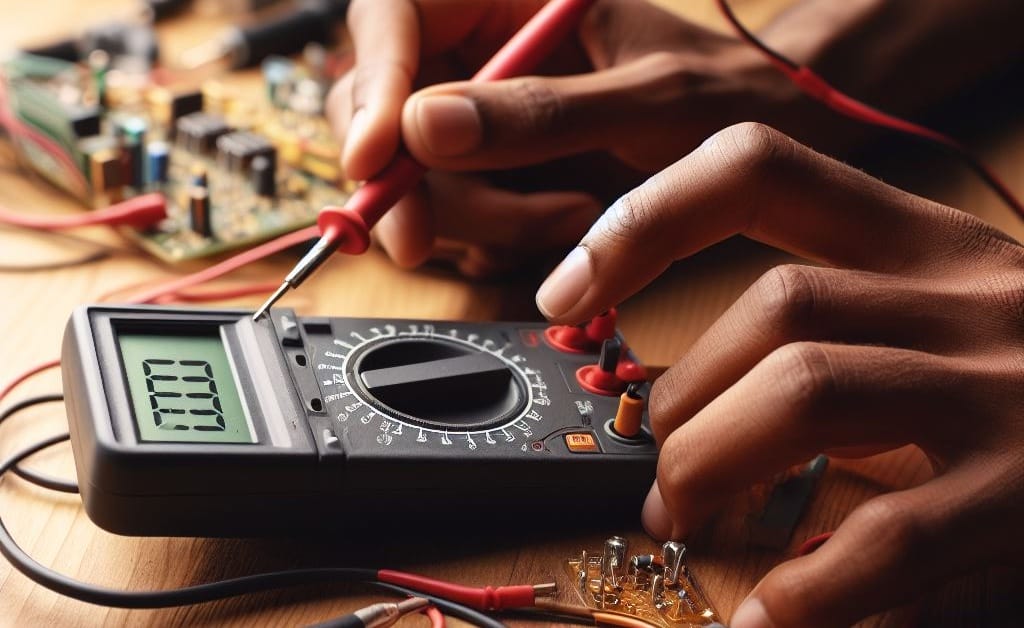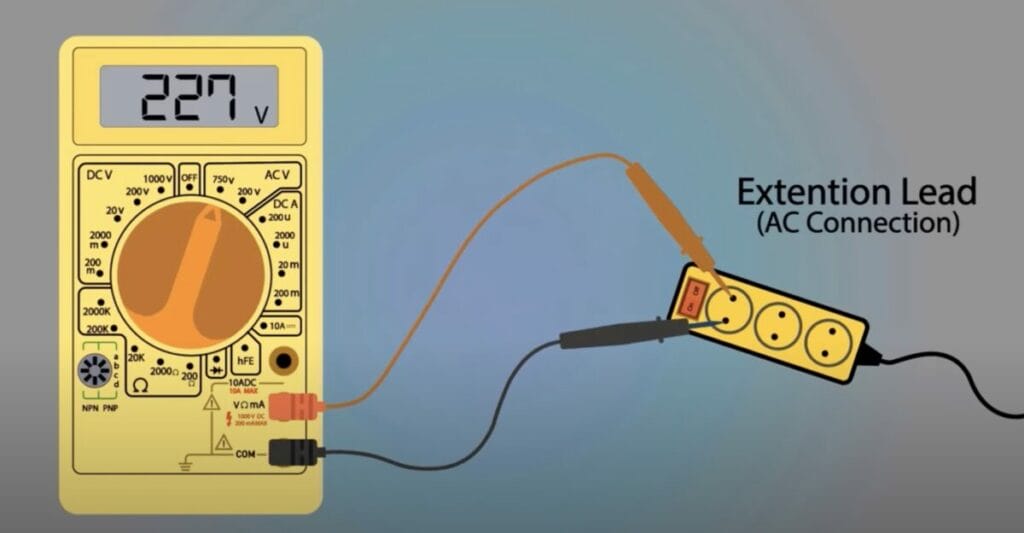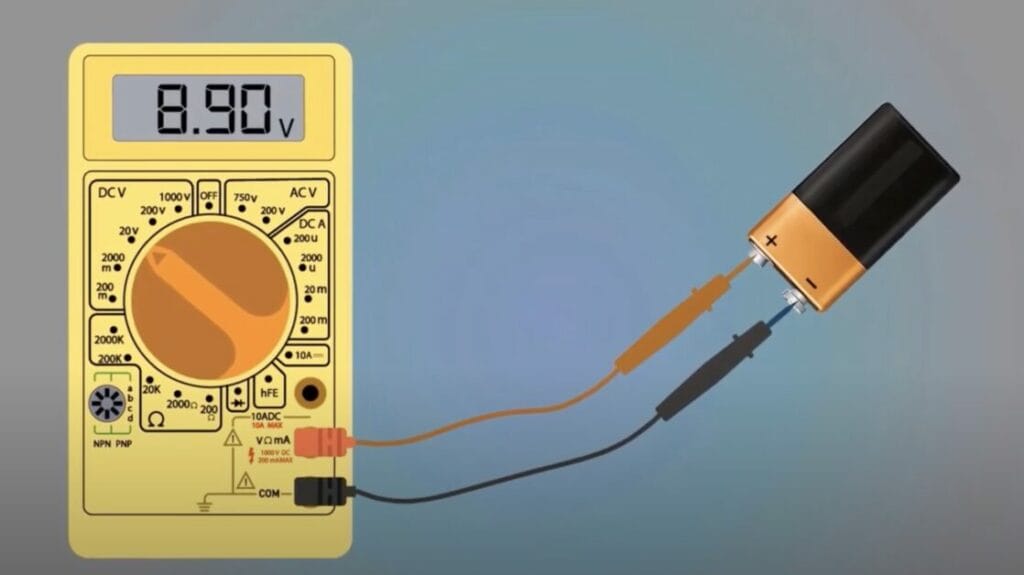Multimeter DC Voltage Symbol (Guide & Photos)

Multimeters can measure direct current (DC) voltage and alternating current (AC) voltage, so users often do not fully understand the symbols on multimeters. In the following article, we will tell you about the symbols when measuring current (DC).
What is Direct Current?
A direct current is an electric current whose direction does not change with time (DC: Direct Current). This is an electric current that flows in a fixed direction without changing. Intensity can increase or decrease but does not change direction.
What Represents the Multimeter DC Voltage Symbol?
Let’s take a look at the Multimeter. To represent the potential voltage difference (V), the amperage (A) of direct current (DC) will usually be placed in a dotted line with a solid line above it, which can be distinguished from the symbol signal of alternating voltage (AC).
“V” with a dot and a solid mark, is the voltage symbol of direct current (DC).
“MV” with a wavy line or a pair of lines, a dotted line, and a solid line is the “millivolt” symbol for direct current (DC).
How to Express Amperage (A) of Direct Current (DC)?

The unit of current is the ampere, so its symbol is A. The notation of amperage in direct current (DC) is the same as the voltage symbol. (1)
“A” with two lines, a dot and a solid line, is the amperage symbol of direct current (DC).
“mA” with a dotted line and a solid line: this is the “milliampere” symbol for direct current (DC).
“µA” with a dotted line and a solid line: this is the symbol for “Microamps.”
(one-millionth of an ampere) of direct current (DC).

Common Symbols Used in Multimeter for Direct Current (DC) and Bidirectional Current (AC)
Ω = Ohms.
kΩ = Kilogram.
M = Mega ohms.
COM: is the jack of the black wire
A: is the jack of the colored lead (if you are measuring currents as high as 10 amps).
mAVΩ is the jack for all other measurements, including sensitive current, voltage, resistance, and temperature measurements if the meter has only three jacks.
mAµA is for measuring less than one amp current if the meter has 4 jacks.
Wrapping Up
Hopefully, through the above article, you will understand more about multimeters, and you can use the knowledge in the future. (2)
References
(1) Voltage Info – https://www.electrical4u.com/voltage-or-electric-potential-difference/
(2) Multimeter Info – https://www.electrical4u.com/voltage-or-electric-potential-difference/
Video References:
source of skills

